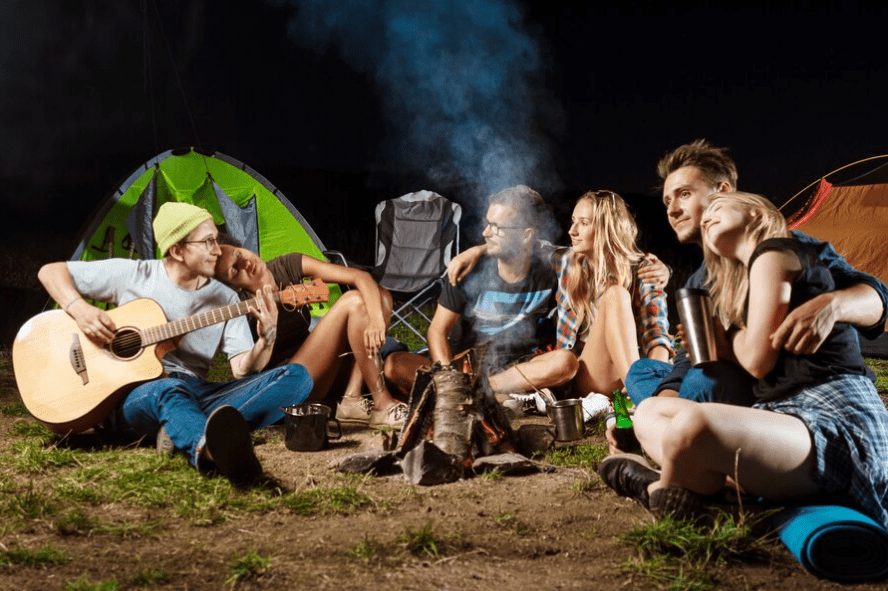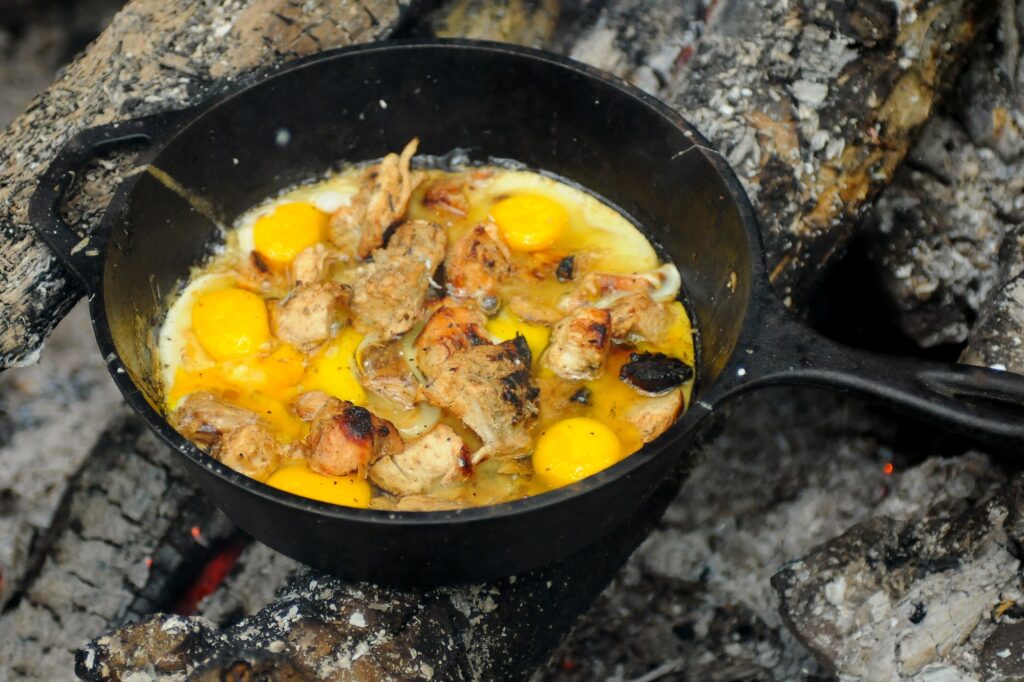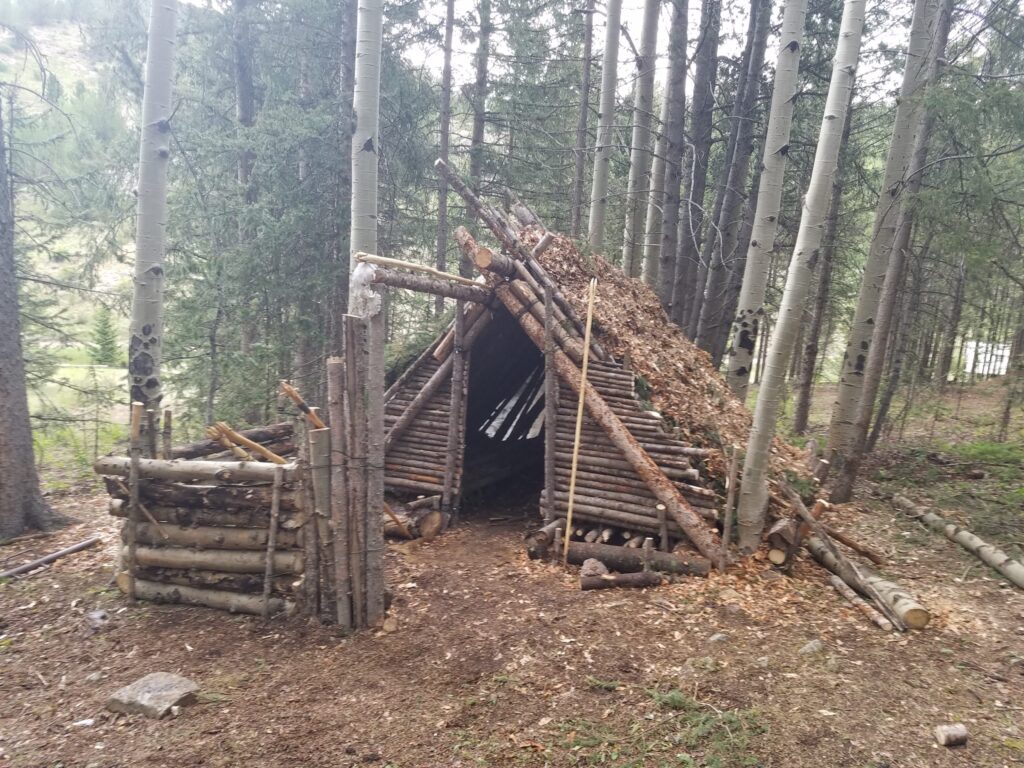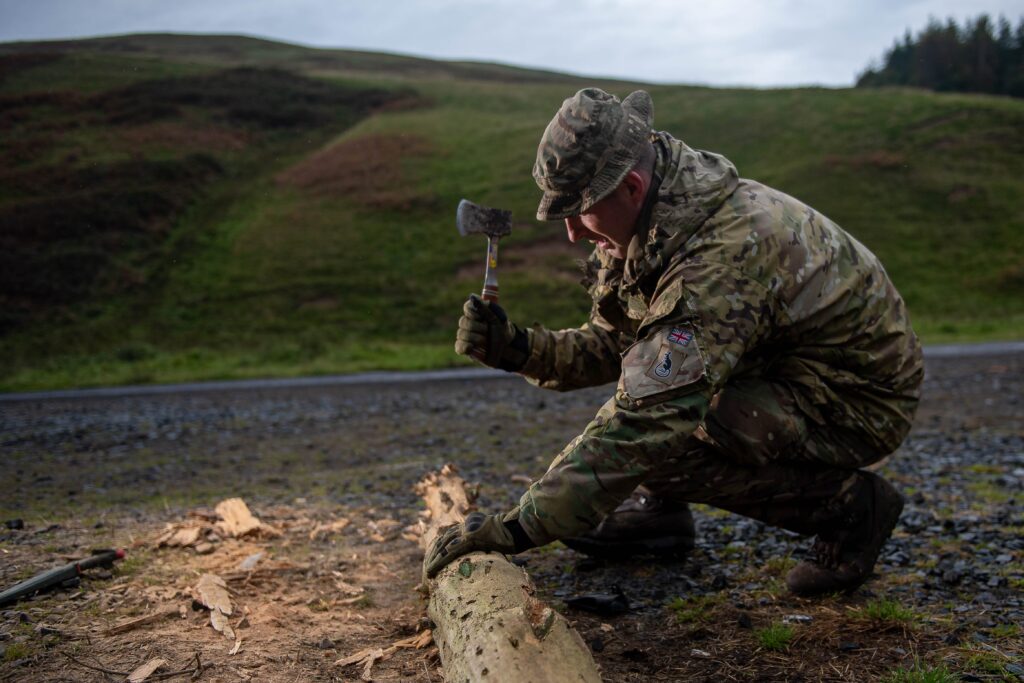In this article, I would like to explain to you exactly how I prepare for my next camping trip. In this article, however, I would like to specifically address the topic of water.
Water is the most important thing for a person and of course also for animals, for example, if you take your dog with you.
If you spend your camping holiday at a large campground, you will most likely always have access to drinking water. But what if you’re camping off the beaten path and the nearest town or Seven-Eleven is several hours away?
So you should read this article carefully. I’m trying to give you helpful tips based on my experiences in camping and outdoor survival. When it comes to food and drink, things get a little more exciting for us. It is important to weigh up comfort, health, gimmicks, and gadgets.
In the beginning, it is important to get an idea of the overall situation. We have to estimate the conditions on-site as well as possible. The individual situation and various implementation options must be taken into account for the on-site conditions.
Table of Contents
On the campsite
First important detail, we are on a campsite, so in civilization. In addition to the general public services, such as restaurants and shops, there are usually sanitary facilities. You should definitely clarify this before the trip, as you can adjust your entire water supply accordingly.
In addition, it is good to know whether the site is on a river or a lake. The water quality can be queried by the local water supplier or national park office. Then you will know whether you have to reckon with heavy metals in the water and you will also know what the bathing opportunities are like.
The basic care
Regardless of how good the local supply will be, you should never set off without sufficient drinks. This is especially true with children.
For the general daily supply of drinking water, authorities estimate approximately 1.3 gallons (5 liters) per person (per day). This value also includes the water used for preparing food. You should not neglect this, as the finished meal is often boiled with water, especially on longer camping or outdoor tours. Grilling isn’t the only option everywhere, and noodles also need water.
Transport and Storage
If we assume that we are traveling with four people for three days, we would use a total of about 16 gallons (60 liters) of water. That’s 30 to 40 big bottles. That should give a space problem in the car and it’s not particularly sustainable either.

Conversely, with a 10-liter canister, we would have water for half a day. According to our own experience, the 10-liter canister is enough for a whole day.
The small calculation example only serves to create an awareness of the situation. The absolute numbers can be different for everyone and also depend on external influences. Like how warm it is.
What is to be considered?
If you get the drinking water on-site from a well or a water station, you don’t have to transport as many water bottles or containers in the car.
Particular attention must be paid to the cleanliness of the system. On the one hand, you can see whether the operator takes care of the facilities, on the other hand, you should pay attention to cleanliness yourself since every user has an influence on hygiene.
If you do not have confidence in the local water supply, there are various cleaning options. The water should always be optically clear, odorless, and of good taste.
If you collect the water in a larger container, tank, or canister, it is up to you to make sure that it is clean. The water should also not be stored for a long time and, above all, in a cool place. Otherwise, you breed your own biotope.
Water cleaning options
Basically, there are different cleaning options available to you: filtering, chemical cleaning, or UV disinfection.
Chlorine tablets
Most people know the classic chlorine tablets. These are easy to dose and fit in any luggage. However, chlorine tablets have the disadvantage that they have a negative effect on the taste, and the addition of chemicals is not without controversy. After all, in addition to bacteria, viruses can also be killed and the water can be stored a little longer.
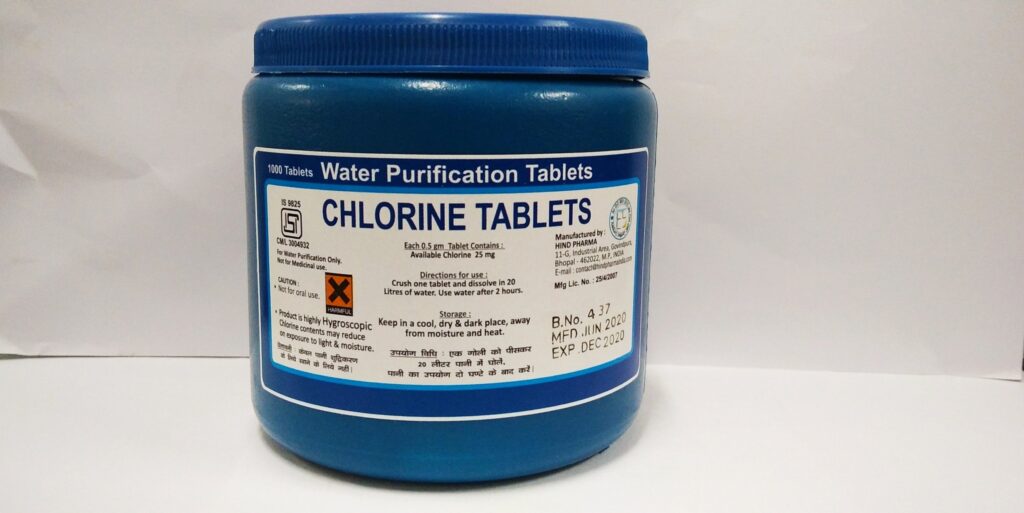
There are different variants of water purification tablets and sizes also in connection with silver ions. The manufacturers promise that the drinking water can be preserved for up to 6 months. There is also an anti-chlorine for taste neutralization.
UV disinfection
A good alternative to chemicals is UV disinfection. UV rays are passed through the water and the genetic material of the microorganisms is changed in such a way that further spread is not possible. However, UV radiation has very important application limits. On the one hand, the water must be very clear so that microorganisms cannot hide behind particles. In addition, the radiation intensity must be adapted to the amount of water. This requires electricity.
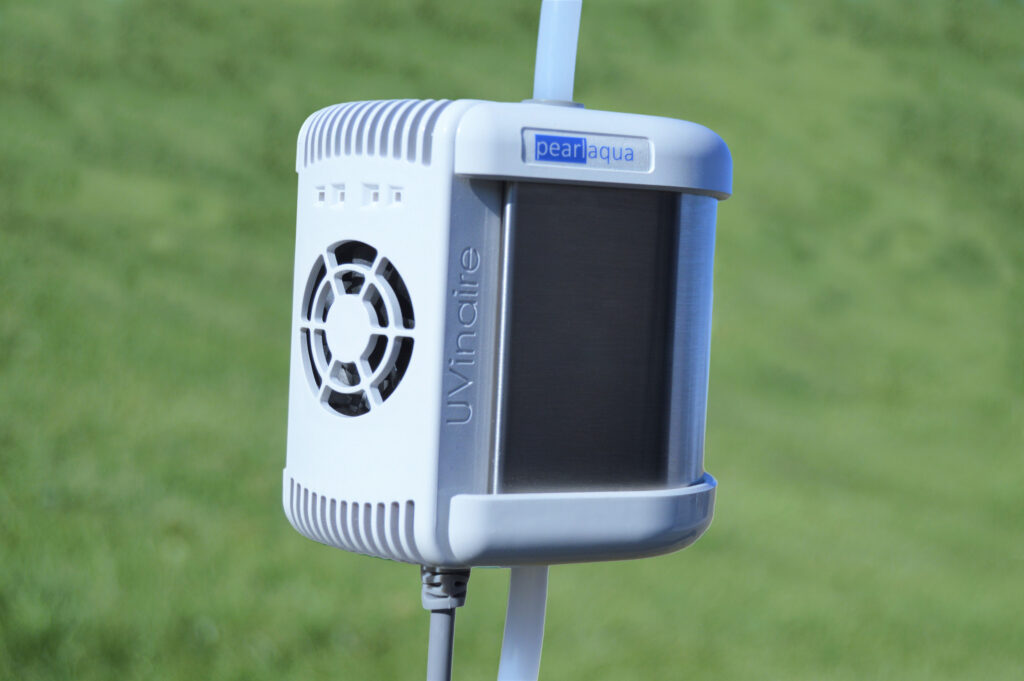
When camping, it is not possible to install larger UV systems. This is where UV pens come in handy. This fits well on the belt, but the size is not necessarily suitable for large groups.
Water that has been disinfected with UV radiation should also not be stored. The water is not sterile and impurities can spread again.
Filter
Last but not least, there is the classic water filter. And there is an infinite number of them on the market. Since we’re camping and don’t have any fixed installations, we’re going to forego the pre-filter at this point and focus on the bacteria and virus filters.
To select a suitable filter, individual preferences and needs must be determined.
With a pump filter system, we would certainly have the best opportunity to combine a virus filter with an activated carbon filter. The necessary pressure is generated like a bicycle pump and with the help of hoses, we can very easily transfer from a tank to a bottle.
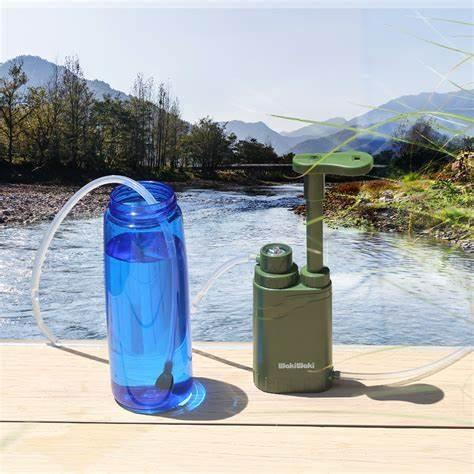
There are also filter systems from various manufacturers that work like a straw. However, these are not so well suited for our purpose, as they are difficult to fill bottles with. The “straws” are often available in combination with a drinking bottle. You must be aware that a bacterial filter has very small pores and the water requires high pressure. In the case of solid housings, you create this with your mouth. That can be very tiring.
For the campsite, the gravity filter should be a good choice. You have a soft water bag and a filter insert. The 1-liter variant replaces a drinking bottle and the 3-liter variant is ideal for groups. This means that nothing stands in the way of camping away from civilian infrastructure.
The popular activated carbon filters are good for improving the taste of the water. It is very important to read the operating instructions for each filter. If you don’t use the filter, you have to clean and dry the filter element so that the deposited dirt does not end up in the drinking water or the filter becomes moldy.
Activated charcoal dries very poorly, so dispose of the cartridge after use (usually after the weekend or vacation). In some of the water filters described above, activated carbon is integrated. When buying, make sure that I can replace the activated carbon individually. Otherwise, you have to keep buying expensive new filter elements, even though they are still good.
Conclusion
As you can see, even a small trip with a tent or rooftop tent can involve extensive planning. There are also plenty of drinking water supply options.
Especially if you camp away from civilization, you should think about the water supply early enough. Nothing is worse than when you have to worry about the right water supply at the campground.
Generally speaking, it’s always better to have too much water than not enough water. There are many ways to transport water. There are now handy collapsable containers that you can fill with water and when they are empty you can simply fold them up and stow them in your vehicle.


